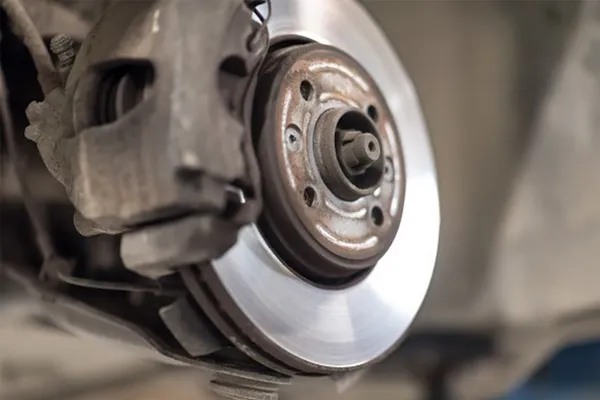Your car’s brake system serves as your safeguard against automotive catastrophe, even in casual driving situations. In addition to bringing your vehicle to a screeching halt in an emergency situation, your brakes provide critical stopping power for those countless everyday occasions when you need to slow down.
The more you understand about how your brake system works, why it might not work, and what you need to do to keep it functioning properly, the more effectively you can ensure a safe driving experience. Check out the following key points about brakes.
Brake System Components and Operation
Today’s cars and trucks rely on hydraulic power to increase braking force and efficiency. The hydraulic brake fluid fills a master cylinder that also contains a piston and spring. When you press the brake pedal, the piston and spring push the fluid through a brake line into a slave cylinder. The slave cylinder can then transfer these forces to the brake assemblies attached to your wheels.
Cars come equipped with either disc brakes, drum brakes, or a combination of both (with the disc brakes on the front wheels). A disc brake consists of a flat metal disc, or rotor, with calipers sandwiching the inner and outer sides of the disc. Hydraulic pressure makes pistons squeeze the caliper shut, with pads on the inner surfaces providing enough friction to stop the wheel rotation.
A drum brake consists of a hollow drum-shaped piece that contains shoes (which play a similar role to pads in disc brakes) operated by springs and pistons. The slave cylinder sends pressure to the pistons, forcing the shoes outward until they contact the inner lining of the drum. This friction slows the drum (which turns with the wheel) until the wheel slows or stops.
Brake System Problems
Since so many parts must work together for normal brake function, a malfunction or other problem with any of them can cause your brakes to grow less efficient or even stop working altogether. Fortunately, most brake problems give savvy drivers fair warning that they need to have the brake system checked as soon as possible.
A puddle underneath your vehicle may indicate you have a leak in your brake line, causing fluid to drain and robbing you of braking power. A spongy or non-responsive brake pedal may point toward air in your brake fluid or a master cylinder malfunction. Get these problems fixed immediately, even if it means having your car towed to the service center instead of driving it there.
The sound and feel of your brakes can also alert you to specific brake component issues. For example, manufacturers design brake pads to make a squealing sound when they grow thin, a signal that you need to replace them. A grinding sound may mean that the pads have worn out completely. Letting this problem go can cause damage to your brake rotors, a more expensive problem to fix.
Brake problems sometimes occur on one side of the car only. If your car pulls to one side when you brake, for instance, one of your calipers or brake hoses may have stopped working.
Even if you don’t hear or feel a change in your brakes, your dashboard may still inform you that you have a problem. Most of today’s cars have a separate trouble light that either indicates a malfunction or reminds you to seek regularly-scheduled maintenance.
Brake System Maintenance and Repairs
Your operator’s manual will tell you when you need to have your brake system inspected, but you can also have this service performed whenever you go in for an oil change or other periodic maintenance. To help preserve brake performance between inspections, check your brake fluid reservoir, watch for puddles on your driveway, and avoid frequent, hard stops.
Most brake problems have simple solutions. You may need new brake pads, new (or resurfaced) rotors, or a new hose to fix a hydraulic leak. More elaborate repairs may involve replacing a disc, drum, or master cylinder.
Trust Powers Transmissions to inspect your brakes regularly, administer any necessary care, and help you keep your vehicle in optimal condition. Contact us to schedule brake service.

